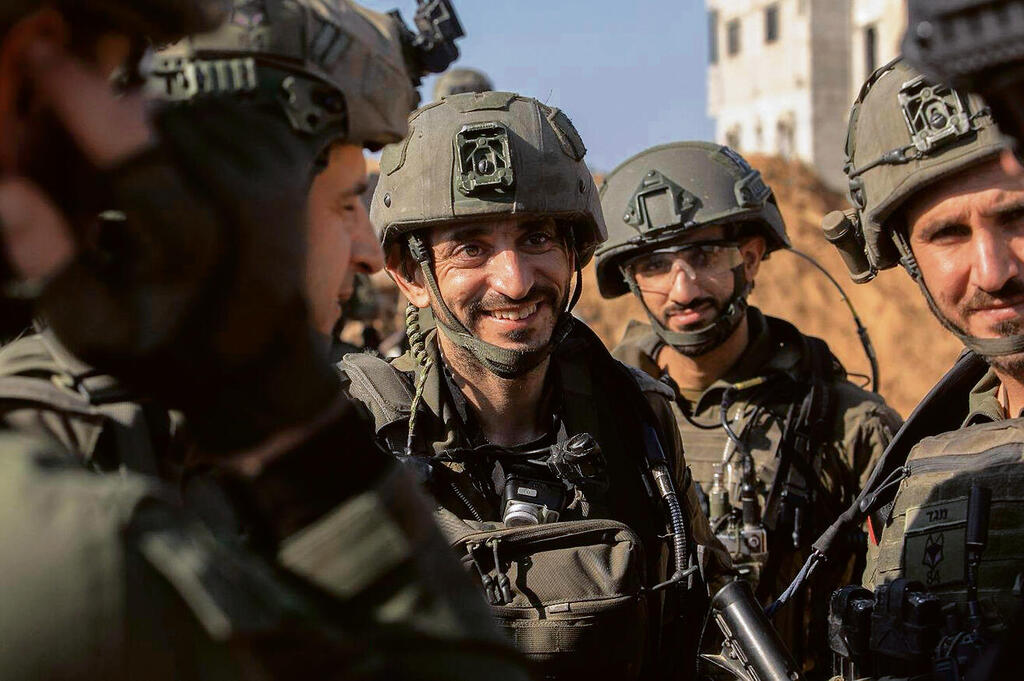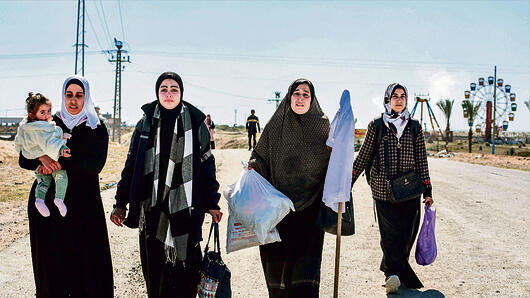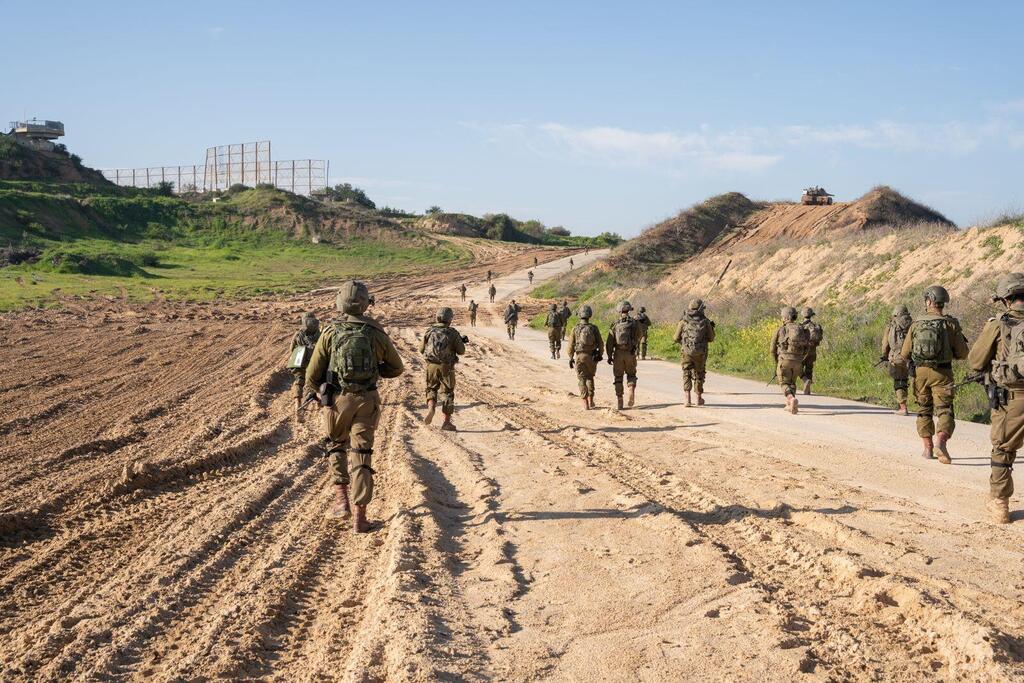Lieutenant Colonel Nati, the commanding officer, runs up the stairs and shouts, "friendlies, friendlies," relentlessly to let the forces above us know that we are approaching so they won't open fire at us.
We hear bursts of gunfire from a Tavor rifle drowning out cries of "clear," "I'm with you," "move, move, move" from the upper floors.
"This is a detachment of Givati Reconnaissance Unit troops, clearing the top floor," Nati explained as he rapidly climbed the stairs, pausing one floor below where the Givati force was still moving from room to room.
The raid took place this week in the hottest spot in Gaza at the moment. Hamad Towers – the neighborhood built by the Qataris for the Hamas government in northwest Khan Younis. Five-story buildings with yards and parking lots. Not exactly a slum, but rather a dwelling for the well-connected.
The forces are done clearing the top floor. The commanding officer regroups his fighters, issues his commands and they go up to the roof to cover the advancing forces.
Then, a deafening blast roared at us. The sound of one of the tanks firing outside echoed through the walls of the house where the battle had just taken place.
An officer enters the stairwell and breathlessly informs Lt. Col. Nati, "we've eliminated one and there's a runner." Everyone sprang into action. The encounter happened only about 500 feet from where we were. The tank crew spotted two gunmen attempting to sneak toward our forces, perhaps to fire an anti-tank missile or snipe them. The tank commander ordered the gunner to take his aim and fire a shell, killing one of the suspects. Now the pursuit of the "runner" begins.
5 View gallery
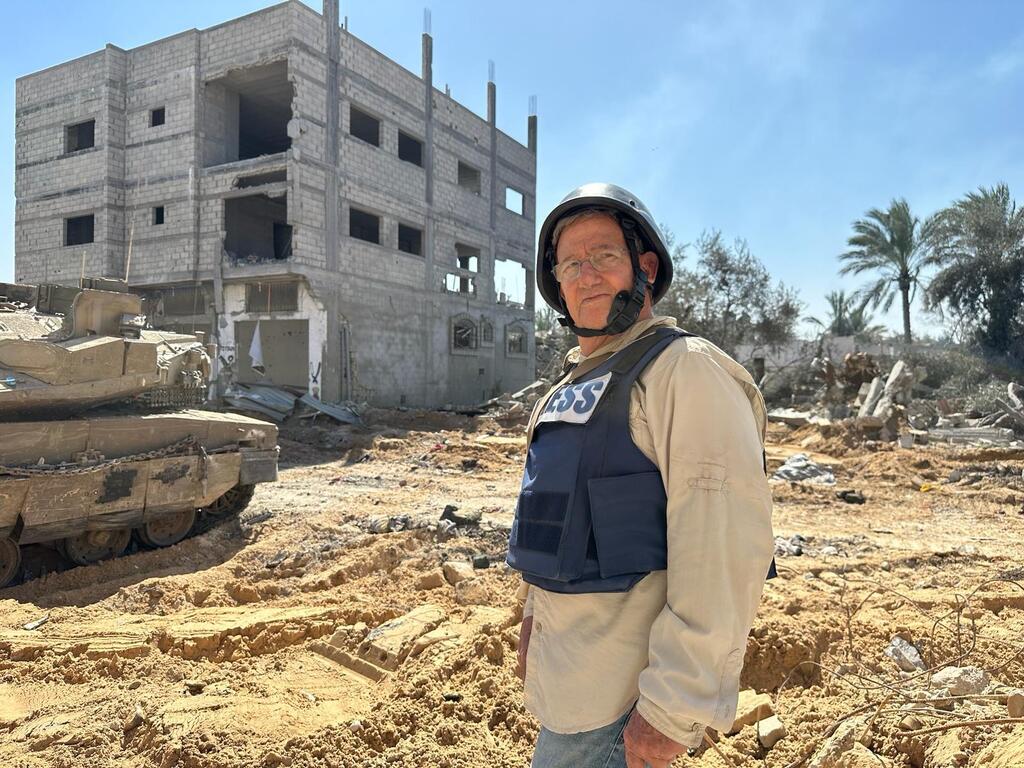

Ynet military correspondent Ron Ben-Yishai joins the troops in Khan Younis
(Photo: Ron Ben-Yishai)
The tanks roll forward. Nati issues commands. I am in the turret of the tank of his deputy, Daniel, which is heading in the opposite direction from where the "runner" was last seen. It becomes clear that the tanks are behaving like a pack of hunters, circling the group of buildings where the terrorist fled to and gradually closing in on him.
"I think I see someone on the second floor of the gray building, right in front of us," says Daniel, and orders the gun to be loaded. "Fire," he commands, and the gunner fires.
The outer wall of the floor where Daniel spotted the runner collapses, black smoke rises from there, and fire erupts. The five tanks around us discharge heavy fire from the machine guns mounted on their turrets and cannons.
The outer wall of the floor where Daniel spotted the runner collapses, black smoke rises from there, and fire erupts. The five tanks around us release heavy fire from the machine guns mounted on their turrets and cannons.
The shooting is directed towards the adjacent buildings to neutralize any potential threat posed by additional terrorist cells that might be lurking there, aiming to ambush the tank crews and Givati troops advancing to clear another building in our current sector.
5 View gallery
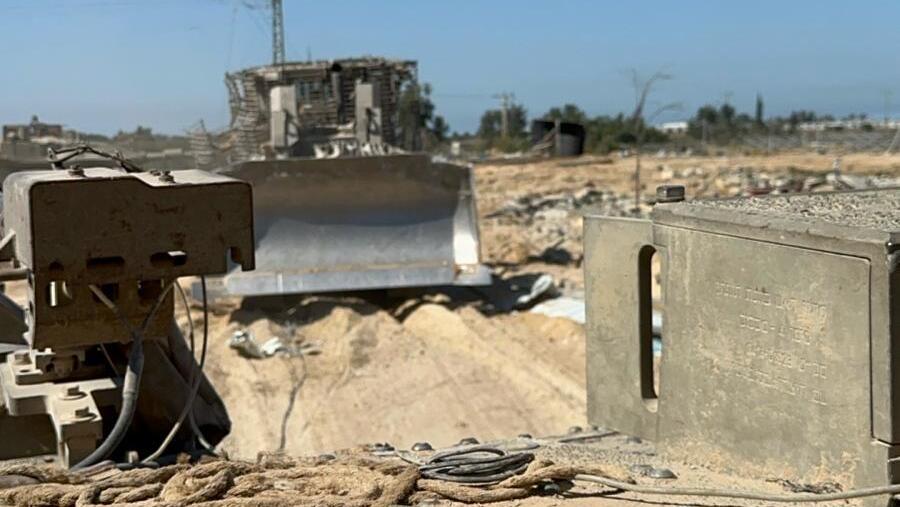

Combat engineering forces operating in Hamad Towers neighborhood
(Photo: Ron Ben-Yishai)
Any suspicious location is hit with tank artillery. The tanks maneuver back and forth to avoid becoming static targets; we are in enemy territory facing numerous RPGs, anti-tank missiles and explosives. Remaining stationary for more than a few minutes in an exposed area poses a significant risk.
This area was not part of the 98th Division’s original battle plans, in Khan Younis. It only became a target following the arrest and interrogation of terrorists who revealed that many Hamas operatives reside in the Hamad Towers and that there are many tunnels and likely rocket launch sites there.
After this intelligence was confirmed, 98th Division Commander Brigadier General Dan Goldfus, with the approval of Southern Command, decided to conduct a surprise raid on the neighborhood, emanating from an area already under IDF control.
The raid took place Sunday overnight, and battles still raged across the neighborhood and its surroundings throughout Tuesday to achieve complete operational control.
Lieutenant Colonel Netanel (Nati) Biton commands the 401st Brigade’s 9th Battalion, one of the combat teams operating under the ambit of the Givati Brigade.
The combat team framework has long supplanted the traditional battle formations we've known. No longer are we dealing solely with tank battalions and infantry battalions, but rather a blend of tank platoons, Givati infantry fighters, engineering personnel and medical and rescue units.
More stories:
Under Nati's command, the team comprises one tank platoon out of the three in the battalion, along with two additional platoons – one from Givati’s Reconnaissance Battalion and the other from its Rotem Battalion.
Originally, the 9th Battalion had three tank platoons equipped with Merkava IV main battle tanks, but Nati transferred one platoon to another battalion combat team operating within the Givati Brigade framework. Another platoon is a reserve platoon that Nati was compelled to release by higher command directive, effectively placing the tank battalion commander in charge of a force primarily composed of infantry soldiers.
The forces first shell the area with artillery and mortars and then Givati riflemen go in to conduct searches to expose tunnels, eliminate terrorists and locate hidden rocket launchers.
They know the elusive enemy is no longer operating within structured formations. This isn't the Khan Younis Brigade, once considered one of Hamas' primary forces, nor is it an organized Palestinian Islamic Jihad battalion. These are small cells attempting to tail our forces and exact a toll on those who have seized control of the area from aboveground, preventing them from uncovering attack tunnels and strategic passages likely lying beneath Hamad Towers.
This is intelligence-driven combat. The objective isn't to seize territory but to locate targets identified by intelligence as harboring past or present Hamas presence and having tunnel shafts and rocket launchers.
The raid unfolds with tanks providing constant cover fire for the fighters, unleashing heavy artillery to shield themselves and prevent Hamas' anti-tank squads from striking them. Major Daniel Delaie, the deputy commander, tells me, shouting over the incessant firing: "We're not only concerned about avoiding harm to ourselves but primarily avoid harming friendlies. There's nothing worse than that."
The turret swivels ceaselessly, dancing from side to side like a hunting predator. As we shift positions and enter new areas yet to be cleared, the tank's exhausts on our flanks emit white smoke to mask us from potential enemies lurking on the upper floors of the surrounding buildings.
The destruction around us is of epic proportions. Movement in the alleyways is difficult, with the D-9 bulldozer leading the way ahead of the tanks and APCs of the infantry platoons, uncovering potential explosives laid along the route. Then, the D-9 approaches the objective indicated by intelligence, and delivers a blow to the outer wall to prevent Givati fighters from encountering explosives and traps.
These bulldozers are one of the keys to success in the Gaza Strip, as well as in the refugee camps in the West Bank. The "Dubi" (as the bulldozer is nicknamed) moves slowly but meticulously as it traverses fields and greenhouses to uncover tunnel shafts and rocket launchers. Meanwhile, Givati troops clear the buildings with gunfire.
We're now facing an area of olive groves that could pose a threat to our forces. Above us, an armed Heron TP drone is ready for action, and a combat helicopter is tethered to us on the radio. Two Air Force reconnaissance aircraft survey the entire area from a relatively high altitude, also serving for deterrence, security and intelligence gathering, but it's uncertain if the fugitive has been successfully cornered.
Advancing to a new target, this time very close to the neighborhood itself. Tank commanders warn each other that Commando Brigade units are operating inside the Hamad Towers and caution is needed to avoid harming them. To our west, we spot 7th Armored Brigade tanks, which also participated in the raid on the Hamad Towers, moving toward the area that is now a combat zone.
For hours, I've been standing in the turret, observing Major Daniel and the tank crew tirelessly at work. It's already well into the afternoon; we're heading back toward the refueling point for the tanks.
Suddenly, by the roadside, we spot an elderly couple, a man and a woman. He leans on a cane. A brief consultation. The commanding officer decides to detain the man for interrogation and the woman to be sent to the exit point, which is at an IDF checkpoint.
"What do we need this man for?" I inquire. "Even if he doesn't appear to be a terrorist or Hamas operative, there's a good chance he knows where there are explosives and rocket launchers, and perhaps even where terrorists are hiding. Therefore, it's worth questioning him," comes the response.
Golani soldiers escort him into an APC and transport him to one of the nearby command posts for interrogation. Perhaps they'll also get some valuable intelligence from him. That's the name of the game. Movement in the field, especially raids, generates a lot of intelligence, and intelligence, in turn, fuels further raids.
The 9th Battalion has seen action since the first day of the ground offensive in Gaza. Nati talks with a hint of visible pain as he reveals that the battalion has lost five soldiers, with many more wounded, some of whom have returned to combat.
"Aren't they exhausted?" I ask Nati. "Doesn't seem like it," he responds. "We all know why we're here, and that goes beyond just me and the officers, down to the last fighter."
A large portion of these troops from the battalion and the battalion's combat team are graduates of religious seminaries, primarily tank crew members. They take great pride in being reservists, and almost all of them are residents of the West Bank, so there's likely not much political disagreement among them.
"We don't have time for that," says Nati. "We're constantly either planning an attack or executing one. And it's not tiring, it's not dull and we can keep going like this for a long time."



